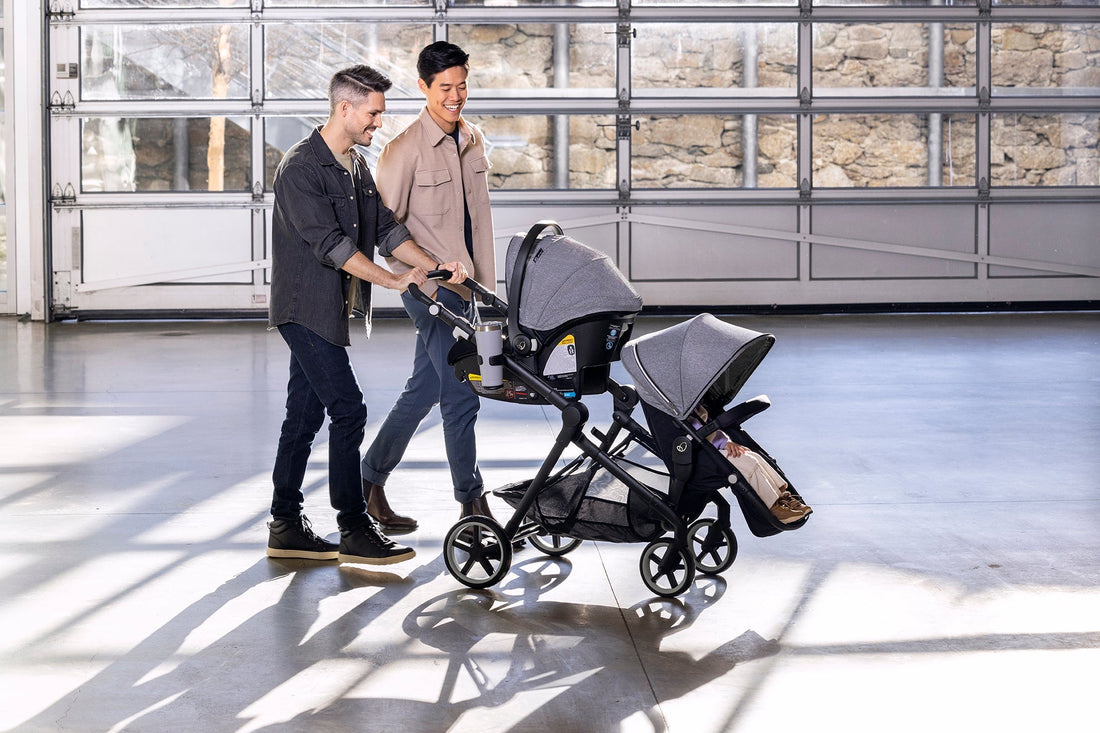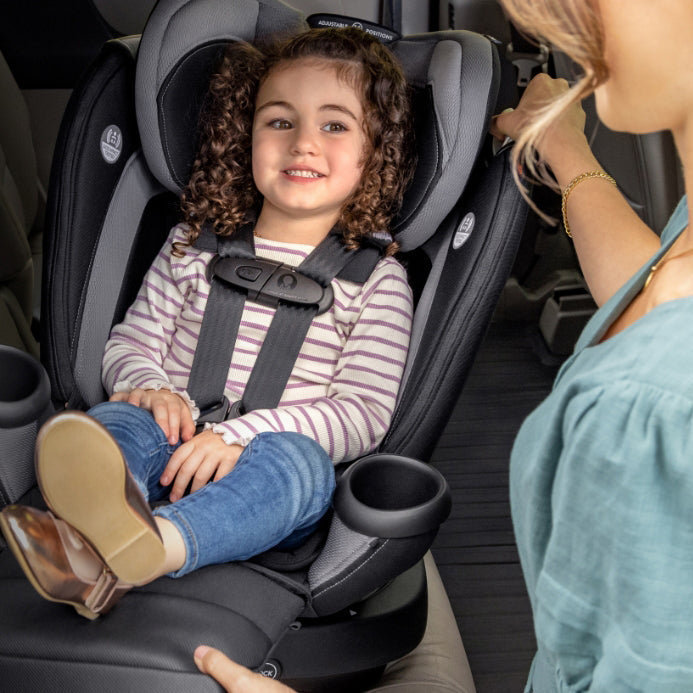
Traveling with Baby: 6 Items You Shouldn’t Leave Home Without
The Items You Need When Traveling with An Infant
These are exciting times—you’re ready to travel with baby! Well, maybe “ready” feels like a stretch. Or perhaps you’ve already hit the road once or twice and realized this is a greater challenge than you anticipated. (Wow did you take traveling solo for granted before, right?) We get it. But we also promise traveling with your little one can be a smooth, safe, and joyful adventure.
As parents ourselves, we can tell you that the groundwork for a successful trip is in the planning and packing. Because you’ve got some tough choices ahead of you (that carry-on bag has never seemed so small), here are our top six essentials for traveling with an infant.
1. Car Seat
If your trip is by land, certainly a car seat is already part of your plan. But if you’re flying, you may be wondering if you need a car seat at all.

While renting a car seat at your destination is sometimes an option, if your family trip is going to include a lot of time in a car, it might make sense to bring your own car seat along. That way, you don't have to worry about struggling with an unfamiliar car seat installation and whether the rented car seat is dirty or has non-visible damage that renders it unsafe in a crash.
As for the flight itself, although a baby can ride for free as a “lap infant,” the Federal Aviation Administration (FAA) strongly recommends that children under 40 pounds fly in an FAA-approved restraint—either a travel car seat or a CARES harness (minimum weight 22 pounds). That means buying a ticket for baby so she can ride in her car seat. To make your life easier, the lighter (and more ergonomic) the infant seat, the better. The Evenflo LiteMax DLX Infant Car Seat exceeds safety standards while also weighing less than most car seats.
Once baby outgrows her infant seat, you may want to consider a lighter weight car seat specifically for travel, as many convertible car seats are often too large and heavy to lug around the airport. Weighing in at just under 10 pounds, the Evenflo Tribute Convertible Car Seat is the ideal convertible seat for frequent-flyer families and/or those who frequently switch between vehicles.
Related Article: Most Common Car Seat Questions!
In addition to being the safest choice, bringing a car seat onto the plane also means your arms get a break. And, if you need a car seat at your destination anyway, having it on board ensures that the airline will not lose or damage it.
All that being said, restraints on airplanes are not mandatory, and the choice is entirely yours!
If you don't want to use your car seat on the plane or while you're in the airport, it makes sense to check it through as baggage. (Or you may check it at the gate, if you want to keep it with you until you board.) If you do check the car seat as luggage, be sure to cover it with a dedicated car seat cover or pack it in a car seat bag—luggage stowed on the airplane takes a beating, so protecting it can help. All major U.S. carriers and most international carriers will check your car seat for free. When you land at your destination it is important to thoroughly inspect your car seat for any signs of damage including missing or broken parts, ripped fabric, or stress marks. If you have any concerns, contact your car seat manufacturer to discuss.
2. Travel Stroller
If you are traveling with a car seat, and especially if you’re taking it on board with you, you’ll want a set of wheels. Bring a collapsible buggy or a lightweight travel system that helps you stroll.
Once baby can sit upright on his or her own, typically around 4 to 7 months of age, an umbrella stroller, pocket stroller, or some other lightweight and compact stroller is the way to go. Make sure it includes storage pockets and/or baskets so that you don’t have your arms full of diapers and souvenirs the whole trip.
Related Article: Choosing the Best Stroller for Your Family
As with car seats, typically you can choose to either check your stroller with your baggage or bring it through security with you and check it at the gate.
3. Baby Carrier
Of course, not all areas of the world are as stroller friendly as we are accustomed to in the U.S. (think quaint cobblestone streets). This is where the baby carrier saves the day. From pacing the airport to touring the Taj Mahal, baby-wearing makes travel easier.
There are many different types of baby carriers, from wraps to structured carriers to hiking backpacks. Because both the upside and downside of traveling is never fully knowing what to expect, we vote for padded, supportive baby carriers that are lightweight, quick to put on/take off, offer multiple carrying positions, and are comfortable and secure for you and your baby.
Bonus: You’ll be hands free and able to take all the selfies you want.
3. First Aid Kit
Sure, you can probably buy most first aid supplies as you need them, wherever you are. But take it from us, the ear infection always strikes in the middle of the night, when you will curse yourself for not packing the medicine. And heads up if you’re taking a cruise—baby-safe medications may be harder to find on the boat.
Pack a baby-specific first aid kit with small amounts of baby-safe medicine, bandages, diaper cream, antiseptic cream, a thermometer, saline spray and a nose syringe or other nasal aspirator (you’ll thank us for this tip someday), and anything else your pediatrician recommends.
4. Playards and Portable Beds
In a perfect world, a crib is waiting for your baby at your destination. But if you’re headed some place unreliable or remote, or if you’re going to a busy resort that may be short on cribs, you may want to consider bringing your own playard or portable bed.
headed some place unreliable or remote, or if you’re going to a busy resort that may be short on cribs, you may want to consider bringing your own playard or portable bed.
5. Painter's Tape
Yes, painter’s tape. If you don’t want to bring an entire baby proofing kit with you, a roll of painter’s tape might be your new best friend. Use it to cover up electrical outlets, tape up blinds, and latch drawers and cabinets shut. It’s no match for a rambunctious toddler, but it will certainly help to keep baby at bay.
While traveling with a baby has its trying moments, good planning, great packing, and realistic expectations can make the entire experience rewarding and fun.
Bon voyage!
YOU MAY ALSO LIKE:

